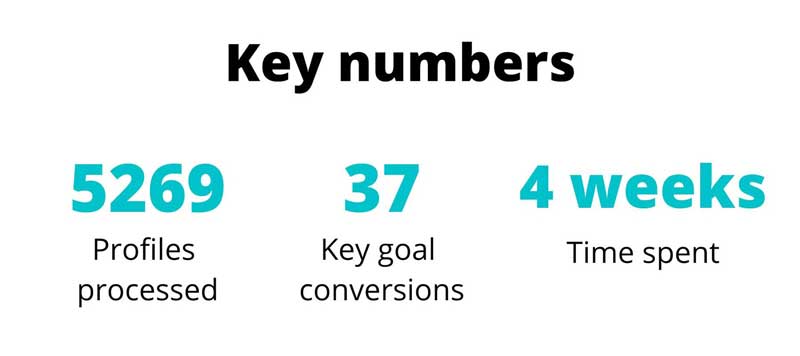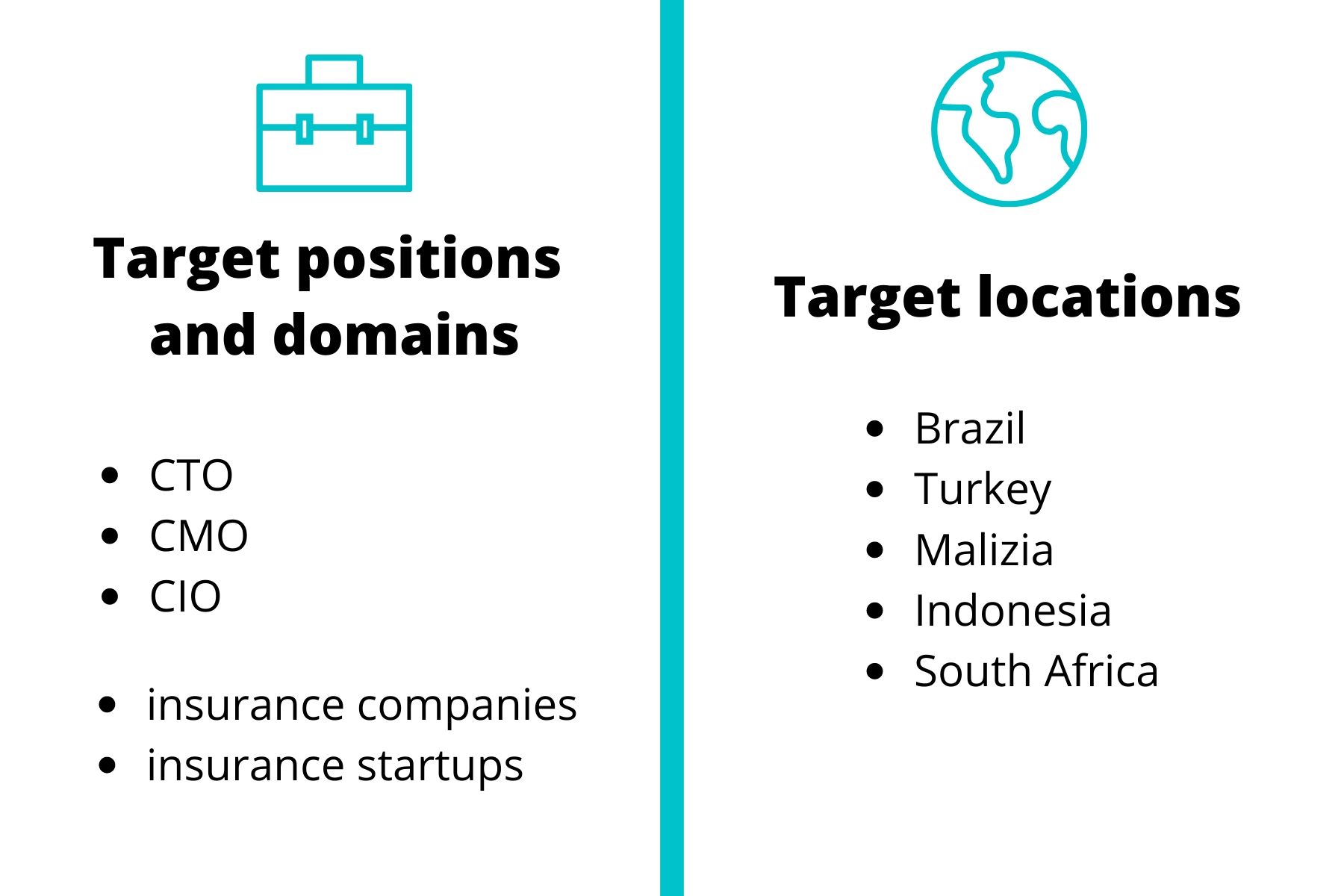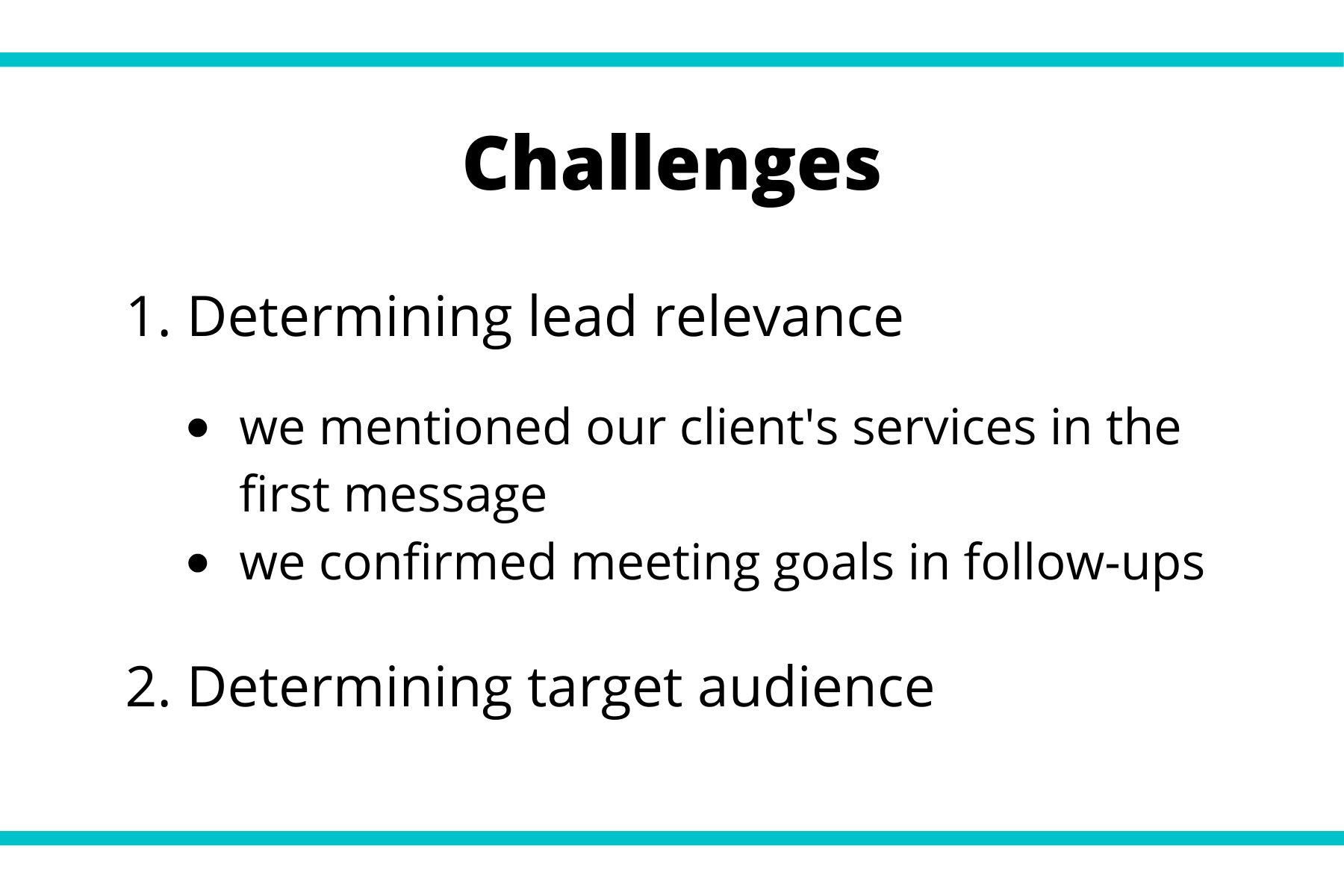Lead Generation Case Study: How We Scheduled 35+ Meetings for an Istanbul Roadshow
Our client planned to expand their presence in the Turkish market and wanted to find more clients. We conducted a lead generation campaign in preparation for their roadshow to Istanbul

Background
Our client, a software development company, wanted to find new clients in the Turkish market. So they decided to do a roadshow, as it’s one of the best ways to discuss potential partnerships in person.
To make this trip as effective as possible, our client needed to find relevant decision-makers and schedule meetings with them beforehand. For this, they needed to generate leads in domains in which they had the most expertise.
We provided lead generation services for our client and started a campaign two months prior to the roadshow.
Our goals
Our main goal was to find relevant decision-makers in our client’s preferred domains and schedule in-person meetings with them before the trip. For this, we needed to complete several tasks:
- Perform market analysis to find the most promising domains in which our client had expertise
- Form and segment a target audience
- Define campaign expectations
- Create custom message scripts with follow-ups for each segment
How we worked
Our first step was to investigate the Turkish business ecosystem and define a business segment whose needs matched our client’s expertise. We conducted research and selected four main target domains:
- Banking
- Ecommerce
- Health and fitness
- Insurance
Within these domains, we targeted CTO, CEO, and CMO positions.

Then we built our strategy and chose the platform. For this lead generation campaign we chose LinkedIn, as in our experience it’s one of the most effective platforms for cold messaging. To automate our work, we used One2Lead, a tool that allows us to automatically send messages and contact requests. However, we needed to make our messages more personalized. For this, we segmented our target audience and created separate message scripts for each segment.
LinkedIn allows you to send only 150 invites per day, so the first week we spent on research and invites. However, to accelerate the process, we worked from three accounts simultaneously: those of our client’s CEO, CMO, and business development specialist. After we got 150 accepted invites, we started to gradually send follow-ups and looked closely at the answers we were getting.
Our pattern was one contact invitation with a personalized message and three follow-ups sent on behalf of our client.
After analyzing the first two weeks of our campaign, we decided to extract a separate segment from the target audience: startup founders and startup hubs. The conversion rate there was great, and our client had experience working with startups, so it was a perfect match.
Challenges
The biggest challenge we faced was determining our target audience and the relevance of our potential leads.
Before the campaign started, we defined a relevant lead as a decision-maker in a company who’s interested in software development services. Though the answer rate was rather high, potential leads agreed to meet our client without a clear understanding of the meeting’s objectives.

To make sure potential leads were interested in the particular services our client provides, we needed to be clear about what we were offering in our invite messages and follow-ups.
In our messages, we not only mentioned who our client is and what they do but also confirmed our client’s objectives for the roadshow in the second message. This helped us sift through non-relevant contacts to make sure our client got as many effective meetings as possible during the roadshow.
To provide maximum information to our client about their leads so they could prepare for their meetings, we asked additional questions about business goals and documented all answers in our final report.
Results
This campaign took us four weeks. During this time, we sent 5,269 invites, 2,775 of which were accepted. Out of 151 relevant leads we found during conversations, 37 leads were willing to have a meeting with our clients. Here are more detailed figures from the final report on this campaign:
| Sent invites | 5269 |
| Accepted invites | 2775 |
| Responses | 432 |
| Relevant leads | 151 |
| Confirmed meetings | 37 |
| Invite conversion rate | 52.7% |
| Response conversion rate | 8.2% |
| Positive response conversion rate | 2.9% |
We communicated with our client after the roadshow and learned they had up to seven meetings per day. The roadshow resulted in nine requests for service estimates and three contracts.
There was one downside, however: we overestimated the time our client had for the roadshow, so they failed to meet 100% of the leads we generated for them. Our client will take the risk of not having enough time to meet everyone into consideration for the next roadshow.

